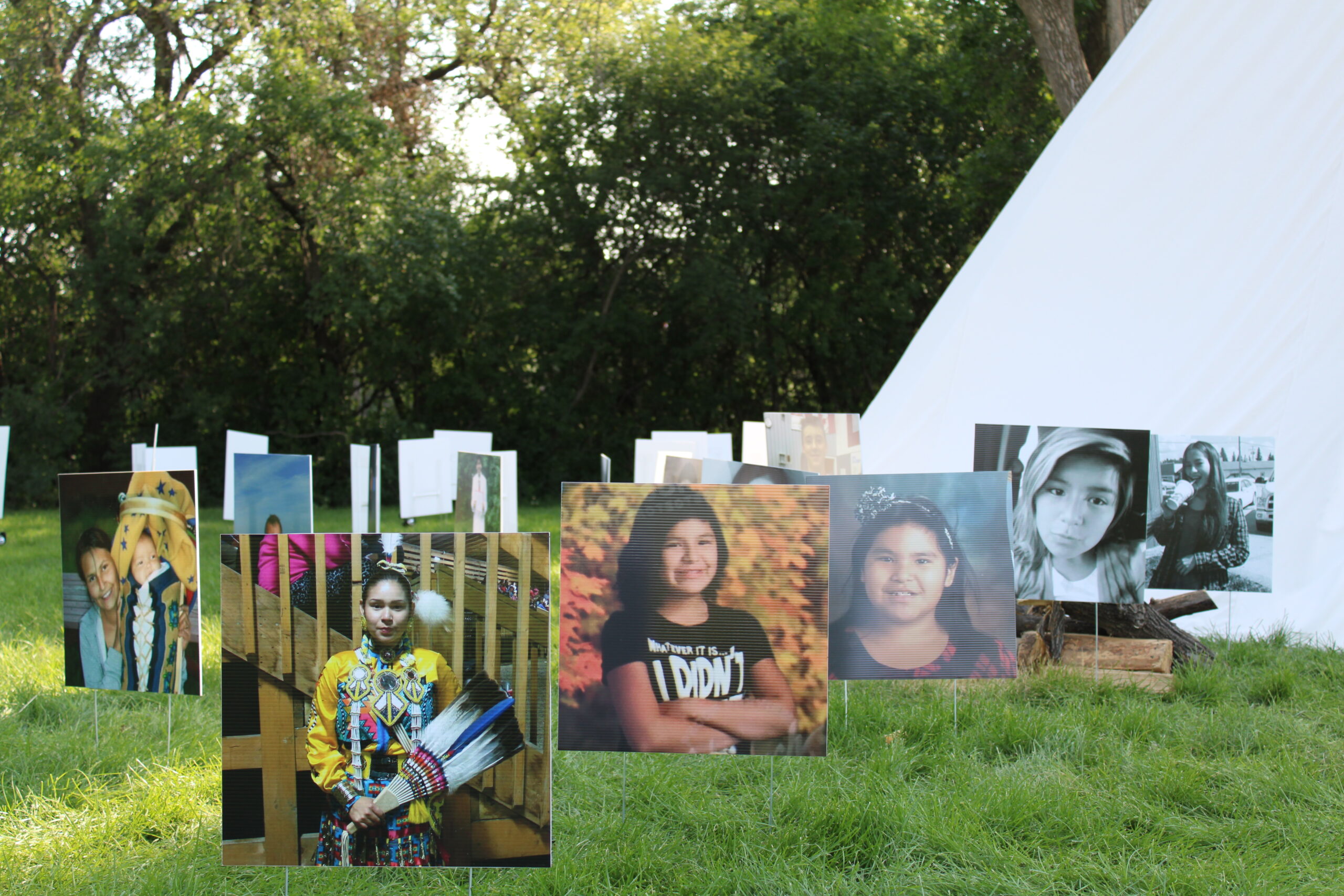Facing the crisis: why media must address suicide head-on
This article discusses suicide. If you are struggling with suicidal thoughts, help is available 24/7 in Canada and the United States by calling 9-8-8: Suicide Crisis Helpline. If someone is in immediate danger, please call 9-1-1 in Canada or your local emergency number.
It can be hard for journalists to report on suicide because of strong reactions to the topic and the potential harm that such stories can inflict. Many of us have our own private stories of people we know taking their own lives. I will never forget when a friend in college attempted suicide. We were able to intervene and get him the help he needed, and today he is happy to be alive.
Some academics argue that certain deaths by suicide should not be covered at all, like in the tragic death of former Toronto principal Richard Bilkszto, where coverage implied that his death was the result of one negative interaction. More recently, reporting of U.S. Air Force serviceman Aaron Bushnell’s self-immolation was criticized for glorifying suicide. The case involved an act of protest, which demands more nuanced and careful coverage.
Reporting on issues of great consequence, like many suicides in a community, is clearly part of the media’s role – even if stories can prompt “copycat suicide, ” as Media guidelines and research suggest. Celebrity deaths, in particular, can have a contagion effect. The research isn’t entirely conclusive. While a link exists, factors like the age of the deceased and the prominence of the story might play a role.
No journalist wants to be the reason a reader, viewer, or listener takes their life. Against that backdrop some of us might fear addressing the topic at all, but that is also a problem. People living in communities with high suicide rates feel ignored, and the problem isn’t going away.
Suicide as an issue should be covered
In 2020, Tristen Durocher, a Métis musician and activist from Buffalo Narrows, Sask., led a protest movement to get suicide prevention legislation passed in the province by walking 600 kilometres and occupying a park across from the provincial legislature in Regina.
The activists raised a tipi in the park and displayed photos of people who died by suicide around it while Durocher held a 44-day ceremonial fast. As journalists picked up the story, lawmakers started paying more attention.
The issue came up in provincial election debates, and in 2021 the legislation passed unanimously. Durocher thinks the power of media coverage helped his activism.
“If there was a media silence, I don’t think we would have been as successful. I feel like people from the communities being able to read the stories of the activism as it was unfolding legitimized it and made them want to support it more.”
Despite the recent legislation, Saskatchewan set a new yearly record for suicides in 2022. “Surely, we can no longer ignore this crisis,” Saskatoon columnist Phil Tank opined this April.
Many northerners told me they resent that lawmakers had largely turned a blind eye to the ongoing suicide crisis in the North that prompted Durocher’s action in the first place.
Northern Indigenous youth in Saskatchewan have long suffered from high rates of suicide, compared to the national average. Infamously, between August 2005 and January 2010, 18 people took their own lives in La Loche, a northern town of only 2,600 people.
Christopher Merasty, who accompanied Durocher to Regina, lived in La Loche during that time. He told me support came and went with the media attention but the problem remained. In 2016, six girls between the ages of 10 and 15 living north of Prince Albert took their own lives in the space of just one month, followed by 20 more reported attempts in the weeks that followed.
Merasty founded a support group for northern men with an aim to stop suicides before they happen by helping give men of all ages and backgrounds a sense of belonging.
Grassroots projects like that are newsworthy.
For me, living and working in northern Saskatchewan, suicide came up almost every day. One La Ronge school teacher spoke of losing 13 students to suicide since she started teaching and having done more than 200 interventions, some multiple times with the same person.
Tanya Talaga, an Anishinaabe journalist, author, and speaker from the Fort William First Nation in Ontario, offers a sharp critique of the Canadian media’s failure to report on the scourge of youth suicide facing Indigenous people, asking if we’ve grown numb to this crisis.
For Durocher, not reporting on suicide amounts to journalists covering up reality. He strongly believes that for suicide to be addressed, it needs to be spoken about.
He is inspired by the way Native American leaders from the Sioux Tribe talk about suicide in their own communities. “They talk about it. And they approach the subject very directly,” Durocher told me, adding that Sioux elders were “addressing it head-on” in the media.
“I thought that was good — that it’s not a taboo, unspoken subject for them. It made me feel like we do have permission to speak on this subject when it affects our communities.”
Marc-François Bernier, a journalism professor at the University of Ottawa, agrees with Durocher that journalists need to report the reality. “Journalism always has social impacts,” says Bernier.
“Sometimes it’s very tragic, but that’s what we call life. If journalists are serious and ethical in their work, they must not keep silent on the events of real life.”
Suicide and mental health: what not to do
While copycat suicides appear to be a real issue, mental illness is often a factor, so journalists need to pay attention to how the two issues overlap. Four years ago, Curtis McKenzie took his own life at a federal prison in Prince Albert, Sask. McKenzie lived with a disfigured face because he had cut off his own nose during a mental health crisis while in custody.
During his life, his disfigurement was the focus of news reports that featured gruesome details of his injury in crude headlines that mocked him.
There is no excuse for news coverage that denigrates a man who was known to be mentally ill, and I’m told that this reporting had a negative effect on McKenzie.
After his death, friends brought up the headlines and said McKenzie was self-conscious about his face. “He felt ashamed,” his caseworker, Kim Beaudin, told me.
This is “absolutely” the kind of reporting that people who study the issue would like to see change, says Brian Mishara, a renowned suicide prevention researcher at Université de Québec à Montréal. It speaks to the need for a more careful approach when covering mental health.
The headlines were distasteful, to say the least, but it would be unfair to blame the media for McKenzie’s death. There were other factors at play when he died that point to a lack of support in prison. When someone is suicidal, a “precipitating event” can trigger the act, but it doesn’t come out of nowhere, Mishara told me, adding that suicide is “never caused by one thing.”
Yet, this is something that journalists, especially when crafting headlines, often fall for.
“It’s very dangerous for journalists to take one event or one cause and give the impression, often in a headline [such as] ‘Boy bullied on the internet and kills himself,’ that this was the one thing that compelled the person to take their own life. It’s never that simple,” says Mishara.
The danger is that when vulnerable people in your audience see a person or situation they can identify with in a news report, it might prompt them to do the same, Mishara explains.
Describing a method in detail or making it seem like suicide is a natural result of a horrific situation can send the message that this is the only way to deal with adversity.
“If you’re talking about a community where there is a high rate of suicides, it could be very harmful to give the impression that this is a messed-up community that makes people kill themselves,” says Mishara. “More people will get the idea that there’s nothing that can be done.”
Censorship is not the solution
While Bernier agrees that some reports can incite copycat suicides, he thinks pushback to the Bilkszto coverage was part of a trend of ideologues pressuring journalists to self-censor.
“We can discuss the ethical aspect of covering suicide, but we have to be fair and specific about the rules we are talking about. Otherwise, it’s an ideological discussion.”
And media failures can be a problem. Bernier’s latest book argues that a 2013 episode of Radio-Canada’s Enquête, in which parents accused Quebec paediatrician Dr. Alain Sirard of wrongly labeling them as child abusers, defied ethics standards and contributed to the Quebec pediatrician’s tragic suicide three years later.
“In this case, it was, from my point of view, very wrong and bad investigative work that was not the only cause, but one of the causes that brought the doctor to take his own life,” said Bernier. “So, yes, we have to be aware of the impact of our stories.”
Toward a more preventative approach
“No one is saying not to cover it. The question is how you’re covering it,” says Mishara about covering deaths by suicide, adding that good reporting can pressure lawmakers to take action.
If reporters want to be helpful, Mishara and other experts agree they should focus on the availability of support programs to highlight the needs of communities. By being “a little bit more interested and proactive,” they could help stop a suicide crisis before it happens.
“I think the issue is a difficult one because usually journalists react when there is a tragic situation. But when a tragic situation has already developed, for example, in a community, it’s extremely difficult to deal with it because it’s gone so far already,” Mishara said.
He suggests that we offset the negative side effects of reporting on suicide by including stories of successful intervention alongside the tragedy, to give readers who identify with the content more options.
“When there is an incident, instead of only focusing on that community and the incident, also do some reporting about other communities where such incidents were avoided.
“If you talk about the death of a person, you should at least counterbalance it with the story of someone in a similar situation who got help. And how tragic it is that that person didn’t get help.”
Navigating the dos and don’ts of how to cover suicide remains a challenge. Mistakes are bound to happen, but reporters have resources they can consult such as the Mindset guidelines, developed by experts. What is clear to me after talking to so many people about this issue is that those living in areas with high suicide rates are feeling abandoned by the media. And that needs to change. As gatekeepers to the broader conversation, our role as journalists is to amplify these voices, not shut them out because their truth makes us feel uncomfortable or afraid.
Michael Bramadat-Willcock is a Quebec-based journalist who has also worked in British Columbia, Saskatchewan, the Yukon, India and Latin America. His work has appeared in major Canadian newspapers, digital and broadcast outlets. He is pursuing an MA, Digital Innovation in Journalism Studies at Concordia University in Montreal. Michael lives on a ranch in the Appalachian mountains near Lac-Mégantic and enjoys being in the wilderness.





